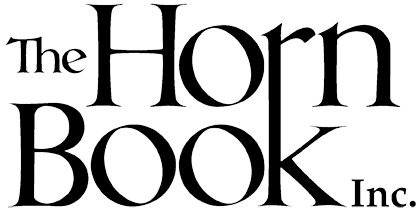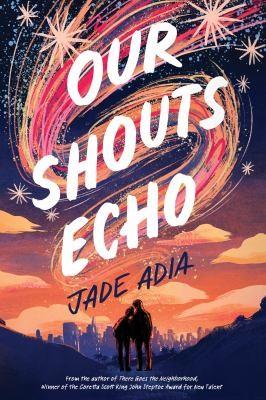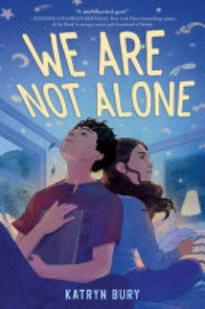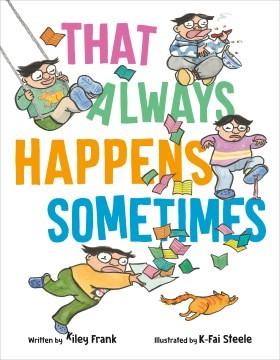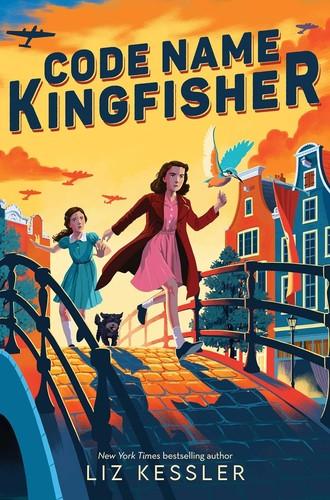Homework
63 Reviews
(2)
YA
For her capstone project on the last day of school, Niarah, who is "walking around life with a full plate of anxiety plus a side of depression and a scoop of OCD for dessert," must present an object that represents where she will be in ten years. But she does not have much hope for the future, so she pulls out a bottle of iodine from her survival kit and explains how it will save her in what she sees as "the inevitable doomsday scenario." Her presentation gains her the name Doomsday Girl and a trip to the guidance counselor's office, where she learns that she is in danger of failing sophomore year if she does not complete her capstone project and PE hours. As an alternative to summer school, Niarah joins a hiking club led by the very handsome Mac Torres. Despite herself, Niarah opens up to Mac, who offers to help her build her fallout shelter and count it toward her hours. Through Niarah's prickly, often darkly humorous, and eventually more vulnerable voice in her survival guide entries, text messages, and interactions with others, readers see a well-realized example of how it feels to be a teenager navigating the world with depression and suicidal thoughts. Mental health and related resources are appended.
Reviewer: Nicholl Denice Montgomery
| Horn Book Magazine Issue:
September, 2024
(2)
YA
As Sam Kepler Greyson heads back to school for the first time after going through chemo, he's still worried about his illness -- now in remission -- and processing the loss of his best friend, Oscar, who died from brain cancer. He doesn't expect things to get better when he's paired with Cat Pellegrini for their eighth-grade California history project, especially when Cat's friends start speculating that he lied about being sick for attention. Sam becomes even more determined not to talk about his cancer -- to anyone, including his moms -- even when he starts having concerning symptoms. But Cat turns out to be the same kind of nerdy as Sam, and they connect over a favorite TV show and a passion for UFOs. With Cat's help, Sam continues the work he'd begun studying extraterrestrials with Oscar, and together they follow clues to locate the author of a mysterious article on the subject. When a health crisis puts his friendship with Cat at risk, Sam has to deal with things he'd rather avoid. The book deals honestly with conflicting emotions of some cancer survivors (including Bury, as an author's note explains) without becoming maudlin, with Sam's wry sense of humor at the core. The cancer and UFO plot threads interweave elegantly, and the book offers possibilities but no easy answers.
Reviewer: Sarah Rettger
| Horn Book Magazine Issue:
January, 2025
(2)
4-6
Illustrated by
Brian Selznick.
The student has become the teacher in this sequel to Frindle (rev. 11/96). Nick Allen is now Mr. N, a Hawaiian shirt wearing sixth-grade ELA teacher who makes his students bring a paperback copy of Strunk and White's The Elements of Style to class and doesn't allow the use of laptops, much to the chagrin of protagonist Josh Willett. Mr. N is the antithesis of computer-savvy coder Josh...or so Josh believes, until he stumbles upon Mr. N's secret past when, looking for a pen to complete an assignment, he finds his mother's childhood "frindle." While he and his friend Vanessa figure out what to do with the information in his "Frindle Files," Josh discovers there's a bigger issue to address: getting a pirated version of Elements removed from the internet. With help from his classmates and Mr. N and a rallying cry "for Wilbur!" (in honor of White's Charlotte's Web), Josh learns about the power of language to enact change and the potential ills of technology if used improperly. Rebellious, smart, persistent Josh is a classic Clements main character, and the parallels between this plot and the original are evident (student/teacher battle, learning from a reference book, national fame). In his straightforward storytelling, Clements pulls modern young readers in by connecting something they might relate to (coding philosophy) to the principles of good writing. This posthumously published novel brings Clements's impressive collection of middle-grade stories to a satisfying close. Black-and-white spot illustrations "drawn entirely with a frindle" are interspersed.
Reviewer: Cynthia K. Ritter
| Horn Book Magazine Issue:
November, 2024
(2)
K-3
Illustrated by
K-Fai Steele.
Max's life can be more than a little hectic. Whether getting distracted and missing the bus, forgetting to do every item on various lists of important things, or careening across the playground like a whirlwind, the protagonist's differently wired mind is always working overtime, which can lead to a lot of fun, or a lot of trouble -- or sometimes both. When you're someone like Max, "that always happens sometimes." Then one day Max is assigned to a group project where each team competes to build the tallest index-card tower, and it becomes the perfect opportunity for Max's creative mind to shine. Frank's first-person narration makes apt use of run-on sentences packed with many clauses and sentence fragments to simulate the frenetic energy of racing thoughts that make constant connections and leaps. Steele's watercolor and ink illustrations add to the zany vibe by depicting the characters' googly eyes with exaggeratedly large whites and tiny beady pupils. The strategic use of visual elements such as the gutter, perspective, and speech bubbles with stylized text reinforces Max's unique personality, perspective, and social relationships. A humorous and empathetic tribute to the neurodivergent kids out there who march to the beat of their own drums.
(2)
YA
Thirteen-year-old Liv lives with her parents in England. When she's tasked with a family history assignment for school, she decides to investigate her ninety-two-year-old grandmother. While helping Bubbe move into an assisted living facility, Liv discovers a secret chest from her grandmother's past and learns more than she bargained for. A second story unfolds in alternating chapters: twelve-year-old Mila and her older sister, Hannie, live in Holland in 1942, but since they are Jewish and the Nazis have taken over the country, they do not live with their parents. Rather, they have assumed different identities, hiding in plain sight with a non-Jewish foster family in Amsterdam. Hannie gets drawn into the Dutch resistance with grave consequences; she is the titular Kingfisher. It's quickly revealed that Mila is, in fact, Liv's grandmother, but Kessler makes readers wait to learn the entire story, using lots of dialogue, a notably fast pace, four viewpoint characters, and several dozen short chapters to further develop suspense. An engrossing read, one that provides depth to the Dutch experience during the Holocaust beyond Anne Frank and her famous diary.
Reviewer: Jonathan Hunt
| Horn Book Magazine Issue:
May, 2024
(2)
YA
Thirteen-year-old Shai Stern is looking for their "new normal." In addition to an edgy new haircut and a change of pronouns, the former homeschooler is planning to attend public school for the first time. Their plan takes a surprise detour when the principal suggests Shai skip a grade and start school as a ninth grader. Shai's transition is even more of a challenge without best friend and homeschool buddy Moose by their side. Thankfully, Shai quickly makes friends with Edie and Nia and even nurtures their first crush on Edie. Balancing the excitement about new connections is an overwhelming amount of homework and a new set of academic expectations, causing Shai's anxiety and nervous skin-picking to return. A school project requires Shai to explore their family's Jewish heritage and how Judaism views people on the LGBTQIA+ spectrum. From interviews with family, attending holiday services with grandparents, and witnessing antisemitic vandalism of the family's synagogue, Shai learns more than expected about the importance of acceptance and community. While Sass tackles several heavy subjects in this affecting novel, readers remain hopeful as Shai comes out of each trial a stronger person.
Reviewer: Hill Saxton
| Horn Book Magazine Issue:
March, 2024
(2)
4-6
"It's been a pretty lousy year and a half since the Accident, and the Universe owes me one." Hercules Beal is still hurting from the loss of his parents two years before when his teacher, Lieutenant Colonel Hupfer (from The Wednesday Wars, rev. 7/07), throws him a lifeline. For his Classical Mythology Application Project, he's assigned the twelve Labors of Hercules. He must learn the myths and consider how each of Hercules's labors connects to his own life. When the sixth grader vanquishes a pack of feral "demon cats," he realizes he has performed a labor akin to Hercules's defeat of the Nemean Lion. Bravely pulling a woman from a house about to be washed out to sea is like Hercules's catching the Boar of Erymanthus. And dealing with grief is like Hercules's forcing the carnivorous birds near the town of Stymphalus out of their hiding places into the open. Although readers might wish Hercules had a couple fewer labors, Schmidt's narrative keeps readers engaged with action, humor, and frequently interspersed 150-word journal-style reflections. He also has Lieutenant Colonel Hupfer teach a valuable life lesson: "You know, Beal, you've been fighting a whole lot of monsters this year, monsters much more real than any the mythical Hercules fought...But you haven't crumbled, have you? And you haven't disappeared. You're still here."
Reviewer: Dean Schneider
| Horn Book Magazine Issue:
May, 2023
(1)
4-6
Color by K Czap. The Eight Bitz dance crew has one more year together before they all go off to different high schools, and they're determined to make the most of it. For protagonist Cory that means freestyling and having fun, but for team captain Tess it means pushing everyone into a tightly choreographed routine that she secretly hopes will get her into dance school. On top of tensions in the crew, Cory is having a tough time in class and is grounded until he brings his grades up. The tutor his parents hire is his prickly lab partner, Sunna--who's secretly a yo-yo prodigy. Yo-yo turns out to be a surprisingly efficient way to interest someone in math and science, but Cory's crew notices that he's passing up time with his old friends as he gets closer to a new one. Galligan's crisp, bouncy, cartoonlike style captures the story's constant motion, making for a fast-paced visual experience with yo-yo strings or b-boying limbs constantly busting out of panels. The narrative speeds along just as quickly, with calendar pages whizzing past. While the focus is on Cory, Galligan finds space to land emotional beats for several members of the large and diverse cast. The changes and challenges of middle school should resonate with many kids, and readers will cheer when Cory finds a way to bring everyone together in a whizz-bang finish.
Reviewer: Laura Koenig
| Horn Book Magazine Issue:
November, 2022
(2)
YA
Sam, a proud nonbinary seventh grader, has to research a figure of local significance for history class, and they are determined not to write about another DSCWM ("Dead Straight Cisgender White Man"). They choose Alice Austen: prolific photographer, lifelong fellow Staten Islander, and lesbian. Along with best friend TJ, Sam dives into research, delighting at the love between women that Austen showcased in her photographs. Their teacher plans to enter the best report in a borough-wide competition, with a chance to have the subject made into a statue. Sam and TJ think it should be Alice--but with centuries of queer erasure against them, it might take a whole community to bring her story to light. Sam's confidence in their identity as a fat, nonbinary kid makes for a lovable protagonist, and their narration is funny and enthusiastic. Elements of queer theory and oft-overlooked historical facts are sprinkled into the first-person narration without feeling too preachy. The heart of this book is found in its intergenerational relationships--Sam's friendships with LGBTQIA+ elders help them learn about fat liberation, queer history, and the value of chosen family. An author's note provides more information about Austen and includes five black-and-white photos, three of which are Austen's.
Reviewer: Bodie Shanis
| Horn Book Magazine Issue:
July, 2022
(3)
4-6
A middle-school project prompts violin prodigy Charlotte (known as Charlie) to research the great-aunt for whom she was named and who disappeared during the Holocaust; her persistent detective work leads to unexpected discoveries about her family. Sweet twelve-year-old Charlie's story provides an accessible entry point into the Holocaust and its connections to people living today, with a dash of hopefulness amid the difficult history.
Reviewer: Shoshana Flax
(3)
1-3
Illustrated by
Paige Keiser.
Second grader Elizabeth (younger sister of Vail's Justin Case) confronts the inequities of alphabetical order, deals with the downside of her longer first name, and learns how excluding classmates hurts feelings and complicates friendships. Friendly halftone illustrations grace these gentle stories of classroom dynamics, family, and friendship--perfect for newly independent readers. Review covers these titles: A Is for El!zabeth and Big Mouth El!zabeth
Reviewer: Pam Yosca
(3)
K-3
Illustrated by
Vashti Harrison.
Teacher Ms. Curie encourages Cece's love of science. When her class gets a research assignment, Cece and friend Isaac choose to investigate whether dogs will eat vegetables. Cece's dog Einstein refuses all veggies until Cece makes a keen observation that leads to an answer. In this kid-friendly introduction to the scientific method, data collection, and persistence, cartoony digital illustrations include the kids' science-project worksheets. Glos.
Reviewer: Janet Dawson
(3)
K-3
Illustrated by
Jeffrey Ebbeler.
When a blizzard strands a young boy at home with his parents and little brother (a.k.a. "the scallywag") on the eve of his school report on Antarctic explorer Ernest Shackleton, he reimagines his family as a restless ice-bound crew. Ebbeler's humorous and evocative illustrations complement the pitch-perfect tone of the entertaining log-style text. An author's note and supplementary information about Shackleton are appended. Glos.
Reviewer: Kristy Pasquariello
(2)
K-3
Illustrated by
Leo Espinosa.
Spanish-language edition translated by Teresa Mlawer. In an unnamed U.S. city, Lola is given homework to draw "the country you are originally from," which Lola doesn't remember. The elderly apartment-building superintendent finally tells her "a monster"--a stand in for political destabilization--"fell upon our poor Island"; Lola's concluding drawing shows her homeland (likely the Dominican Republic) in its complexity. A welcome community and immigration story with vibrant illustrations of city and island life. Also available in Spanish.
Reviewer: Nell Beram
| Horn Book Magazine Issue:
May, 2018
(2)
4-6
Sixth grader Sam Warren feels homework leaves no time for things he wants to do. With the help of his retired-lawyer neighbor, Sam and classmates put together Warren v. Board of Education. Once granted class-action status, the case is off to the Supreme Court. Though hardly credible, the story is entertaining, and readers will learn much about constitutional law and the legal rights of students. Glos.
Reviewer: Dean Schneider
| Horn Book Magazine Issue:
May, 2018
(4)
K-3
First Facts: All About Media series.
These volumes provide very basic (sometimes confusing or incomplete) information about various print- and digital media and research methods. Source gives examples (e.g., books, internet, primary sources) while the meatier Opinions helps readers become critical consumers ("Ask questions to figure out the media maker's purpose"). Helpful sidebars appear throughout, and stock photos show kids working in the library and elsewhere. Reading list. Glos., ind. Review covers these First Facts: All About Media titles: Fact, Fiction, and Opinions and What's Your Source?
Reviewer: Elissa Gershowitz
(3)
1-3
Illustrated by
Peter H. Reynolds.
When Judy Moody is assigned to do a family tree project, she discovers what she thinks is a royal relative; from there it's full-steam ahead: Judy writes to the queen, starts wearing purple, and drops British colloquialisms. But classmate Jessica also seems to know a lot about royalty...could they be long-lost relatives? Judy's fourteenth amiably illustrated episode is timely considering interest in England's current royals.
Reviewer: Kari Allen
(4)
K-3
Illustrated by
Ayesha L. Rubio.
Abby, who is avoiding doing her homework, secretly follows her physicist dad's instructions for making a black hole. But could there be a downside to entering a homework-free "baby universe"? While the story is somewhat contrived, its science is sound, as an author's note avers. The lovely swirls and hazes in the digital illustrations conjure something seemingly antithetical to science: magic.
Reviewer: Nell Beram
(3)
4-6
Middle school is hard for seventh grader Gregory (The 14 Fibs of Gregory K). Realizing that excessive homework doesn't leave time for the things he loves, like creative writing, Gregory goes on a homework strike; as Gregory researches the problem and civil disobedience, he discovers unexpected allies and a clever solution. Pincus has keen insights into early adolescence, and Gregory is a sympathetic hero.
Reviewer: Katrina Hedeen
(3)
K-3
Illustrated by
Harry Bliss.
"My favorite pet is sheep," begins a farm boy's school paper. (The book's text resembles a child's handwriting on lined paper.) The ensuing report is made up not of traditional sheep facts but of entertaining lessons the boy learned while cavorting with his sheep (e.g., "You can't put sheep into a wheelbarrow"). New Yorker cartoonist Bliss's illustrations play like perfect punch lines.
Reviewer: Nell Beram
63 reviews
We are currently offering this content for free. Sign up now to activate your personal profile, where you can save articles for future viewing.

